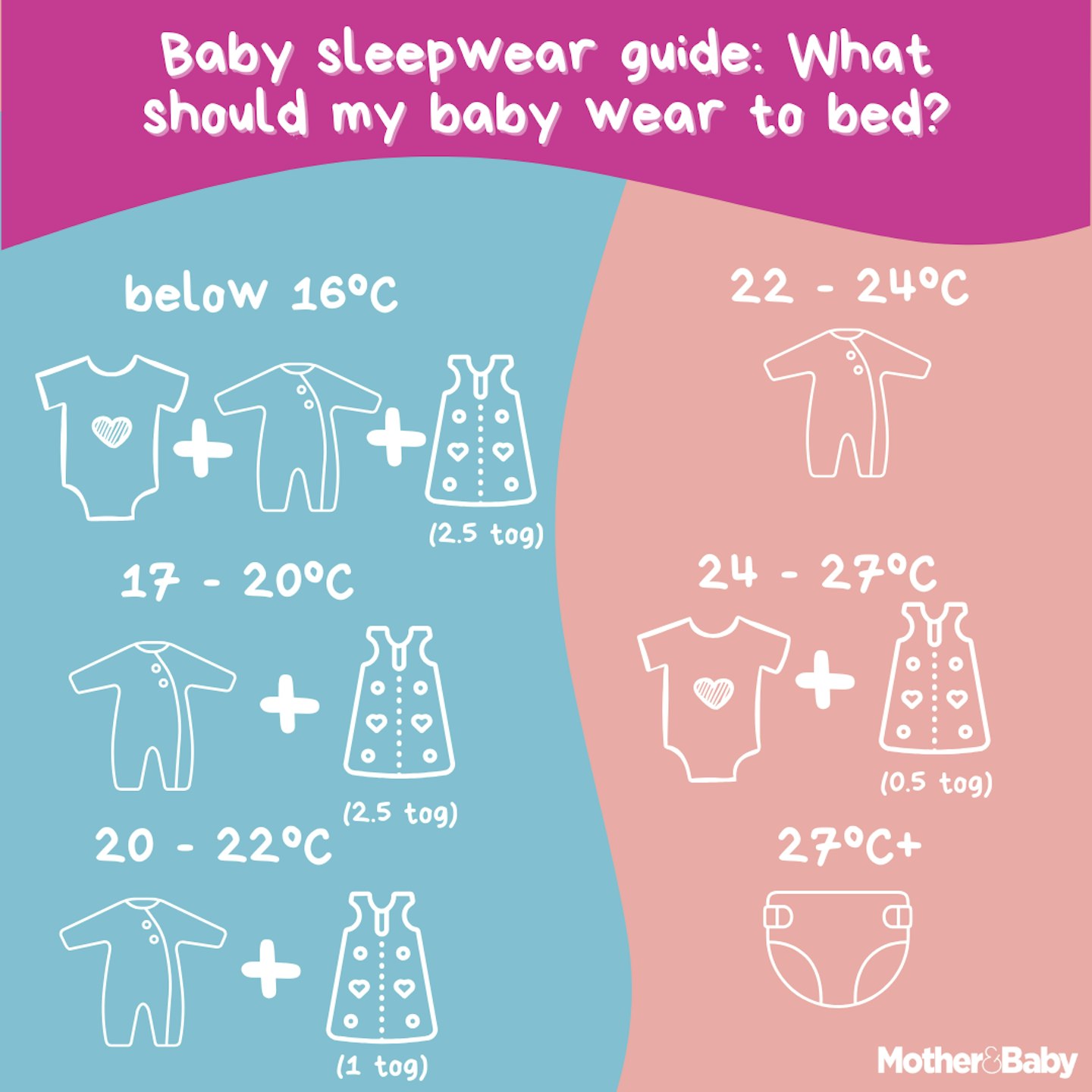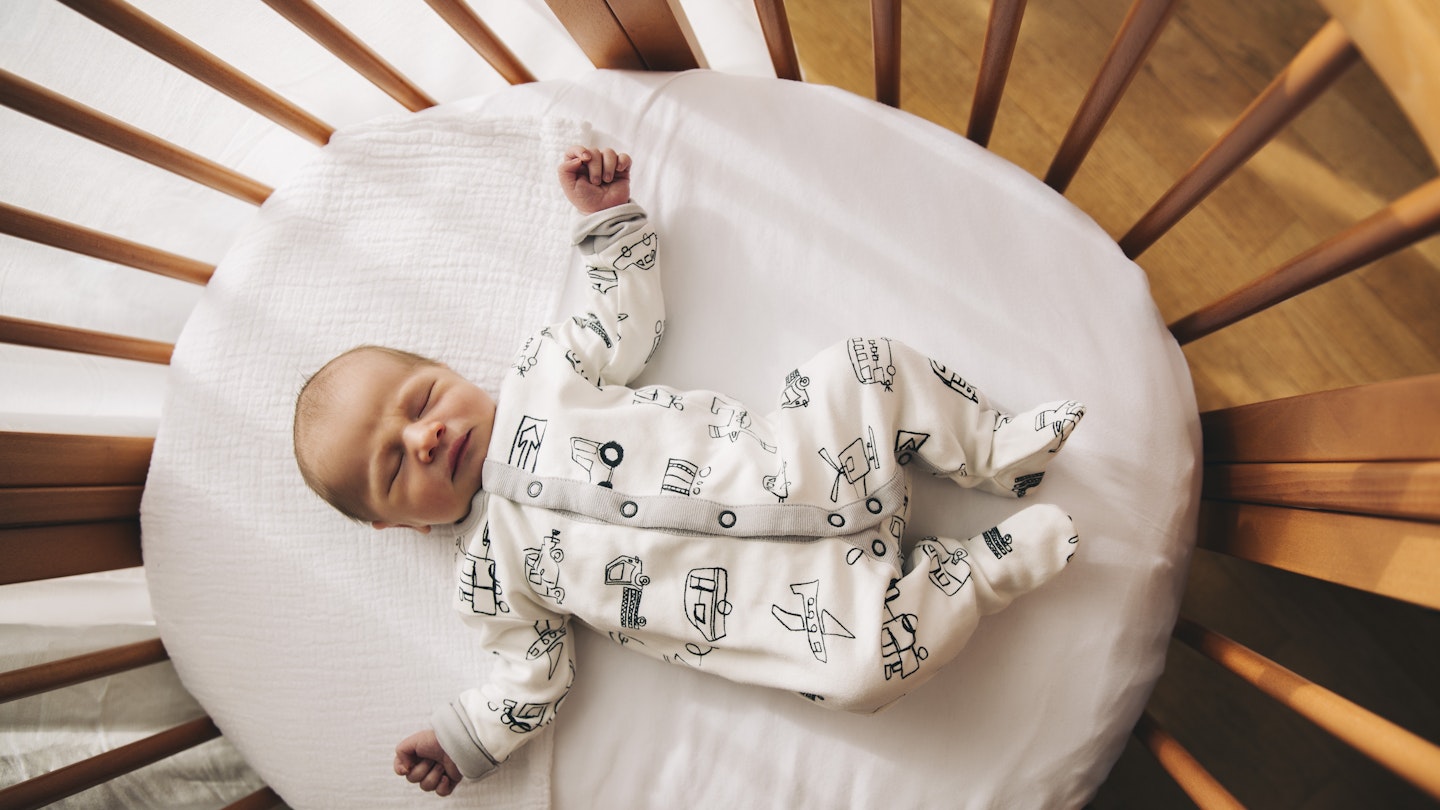
Medically Reviewed by: Midwife Pip, MSc BSc
Navigating life with a newborn baby can be overwhelming and knowing how to dress your little one at night, especially in varying temperatures, can be confusing. Unfortunately, as parents, we can't predict the weather, but we can fill ourselves with the best tips to keep them comfortable at bedtime. Let's make bedtime easier by guiding you on how to dress your baby for sleep, with the help of personal experience and our trusted expert, Midwife Pip Bsc Msc.
In this article:
As young babies are unable to regulate their body temperature and release heat rapidly, it's normal to question what your baby should wear to sleep, and especially what to dress a newborn in at night, as dressing them correctly can help them to sleep better and provide you peace of mind.
There are so many questions you might have around what to dress baby in at night, from what tog size baby sleeping bags to use in different temperatures to how many layers they should be wearing.
Here at Mother&Baby, we pride ourselves on being a reliable place to find all the answers to your questions with expert knowledge and guides to ensure you feel reassured as a parent. We're here to guide you through our baby sleepwear guide and the steps you need to take to ensure your little one is dressed safely for sleep with the expert guidance of midwife and mum, Midwife Pip.
What to dress baby in at night?
We all want a good night's sleep for both us and our baby, so when it comes to dressing baby for sleep, you want to know you're making sure they'll remain as comfortable as possible at night. The main thing to remember is that simple is safest, and what you choose to dress them in will really depend on the weather and how warm or cold their room gets at night.
Here, we've listed all the different options to consider when dressing your baby for bed.
Sleeping bags
Babies do not need to sleep under a toddler duvet until they are older, and it's important you don't overdo the blankets too, as little legs can kick loose blankets off. This is where baby swaddles or sleeping bags are most helpful instead. These are safe, wearable blankets designed to provide some warmth without risking your baby's head getting covered by a blanket. Available in a range of different togs, they're suited to keep your baby snug in a range of seasons.
Sleepsuits
Your baby will also need more layers depending on how cold it is. If it's below 20 degrees, you should layer up your newborn with a sleepsuit and a vest. The best sleepsuits are available in a variety of styles and fabrics to help you find the right one for your baby.
Blankets
We'd advise sticking to a sleeping bag but if you do need to use a blanket, make sure it's a lightweight cellular blanket as recommended by the NHS. Make sure any blankets are firmly tucked in below baby's shoulders to avoid it coming up over their face.
"It is important to make sure your baby is positioned with their feet at the bottom of their cot." Says Midwife Pip. "You should make sure blankets only go as far as baby’s chest and their head is always uncovered and are tucked in to help it stay in place. Cellular blankets are a great option for breathability," she continues.
Swaddling your baby
When it comes to swaddling your baby for bedtime, it really does depend on what your baby finds most comfortable. According to Midwife Pip, "Some newborns really like being swaddled; others do not, so be led by your baby. It is important to stop swaddling when your baby shows signs of rolling and not to swaddle if you are sharing a bed with your baby."
"Your baby should be swaddled securely to prevent material coming loose and risking baby’s face being covered. To swaddle, ensure you use materials such as a thin muslin or thin cot sheet, not blankets. If swaddling, then do not use any extra bedding or blankets as this risks overheating."
Accessories including hats
It's important to remember not to dress your baby in a hat or gloves for bedtime, even in cold weather, and during the summer months, don't overdress them, as this can increase the risk of Sudden Infant Death Syndrome.
Checking your baby's room temperature
The first thing you need to do is check the temperature of your baby’s room, as this will be the biggest indicator of what baby should wear to bed. Whether they're sleeping in their own cot or in a travel cot away from home, having a room thermometer to hand will let you check easily and reliably.
According to The Lullaby Trust, your baby's room should be kept between 16-20°C.
At this temperature, your baby should wear a vest, sleepsuit and have a lightweight sleeping bag. Scroll down to find our temperature chart for more specific details on the best tog sleeping bag to wear at various temperatures.
If your room is hotter than 20°C
At this temperature, your baby should wear a vest, sleepsuit and have a lightweight sleeping bag. If your room is hotter than 20°C you should do everything you can do lower the temperature, this can include:
• Opening a window
• Taking off a layer of clothing
• Using lighter bedding
• Using a fan to cool the room, but don't have it pointing directly at your baby
What to dress baby in for sleep in different temperatures
"Changeable weather might mean we need to check what we are dressing our babies in at night," says Midwife Pip. "Here's guidance on what layers to use for each room temperature."

Under 16 degrees: 2.5 Tog Sleeping Bag + Sleepsuit + Vest
17°c- 20°c: 2.5 Tog Sleeping Bag + Sleepsuit
20°c- 22°c: 1 Tog Sleeping Bag + Sleepsuit
22°c- 24°c: Sleepsuit
24°c- 27°c: Vest +/- 0.5 Tog Sleeping Bag
Over 27°c: Nappy
How many layers should a baby wear at night?
As you can see in our baby sleepwear temperature chart, for colder weather, you'll want to dress your baby in three layers, with different tog sleeping bags. For warmer weather, dress your baby in either one or two layers, depending on the temperature. For extreme heat, don't worry about layers as a nappy will be plenty.
"Remember: use a Sleeping Bag OR a Blanket, not both," reminds Pip.
What should my baby wear to bed in hot summer temperatures?
• Take away any layers - one layer should be enough for your baby.
• Look for thinner fabrics, like a thinner sleep bag or vest.
• During the day, make sure your baby's head is covered, they're kept out of direct sun and that they wear a pair of sunglasses if possible to avoid overheating.
Here's Midwife Pip explaining what to dress your baby in at night, depending on the temperature. You might want to save this for the next time we have extreme weather.
What should my baby wear to bed in cold winter temperatures?
• Layer up with cotton layers, like a vest, sleepsuit and sleep bag, as heat will be trapped between these layers.
• In the day, make sure they are wearing mittens, gloves, hat if needed.
• Don't forget about blankets on your daily walks.
Signs baby is too hot while sleeping
To check if your baby is too hot, The Lullaby Trust say to "put your hand on the skin on their chest or the back of their neck."
If your little one feels hot to the touch, start by taking a layer off of them and check them again in 10 minutes. You can always open a window slightly to help air circulate, too.
When checking to see how hot your baby is, remember not to check their hands or feet as these are often a lot cooler than the rest of their body.
Other signs your baby is too hot are:
• Damp hair from sweat
• Flushed cheeks
• Rapid breathing
• Heat rash
How to tell if baby is cold at night
• Early rising before 6am
• Frequent waking in the night
• Excessive movement when sleeping
• Hands and feet feel cold
• Chest and back of neck feel cold to the touch
If baby does feel colder, you should dress your little one in an extra layer and ensure the room is an ideal temperature for baby, which is about 20ºC (or 68ºF).
How to check a baby's temperature
If you're concerned your child may be suffering from a fever, then it's a good idea to check their temperature using a baby thermometer.
If you're not sure how to take your baby's temperature accurately, simply hold your baby comfortably on your lap and put the thermometer under their armpit (always use the thermometer under the armpit for children under five years of age) and hold their arm close to their body to keep the thermometer in place for the recommended amount of time (usually 15 seconds).
If you're using a digital thermometer, it will probably beep when ready. If your baby's temperature is 38C or more, you should call your GP, as a fever starts at 37.5C.
FAQs: what to dress baby in at night
What should baby wear to bed if they don't like their sleeping bag?
We get that not every baby will find a sleeping bag comfortable, so if you can't get them to settle in one, then it's okay to use a blanket.
"Many parents like using a sleeping bag for peace of mind and ease, but you don’t have to. If your baby doesn’t like a sleeping bag, you can opt to use blankets instead, but never use both as this is an overheating risk for baby," says Midwife Pip. If you are using a blanket, make sure it's a cellular blanket, as these are the most breathable. You should also avoid folding a blanket in two, as it could cause it to overheat.
When can newborns regulate their temperature?
When babies are born, they have an immature thermoregulatory system, which means they struggle to regulate their own body temperature and rely heavily on their environment and clothing. As babies grow and develop, their ability to regulate their own temperature improves. By the time they reach the 9-12 month mark, their thermoregulatory system should be fully developed.
About the expert
Midwife Pip is a truly passionate midwife and advocate for the profession, bursting with knowledge. Pip is an experienced, practising Midwifery Sister, MSc graduate, founder of Midwife Pip Podcast, Hypnobirthing and Antenatal Educator, co-author of published research and a mum.
Mum of one Emily Gilbert is the Features & Reviews Editor for Mother&Baby and has written for the website and previously the magazine for six years. Specialising in product reviews, Emily is the first to know about all the exciting new releases in the parenting industry.
